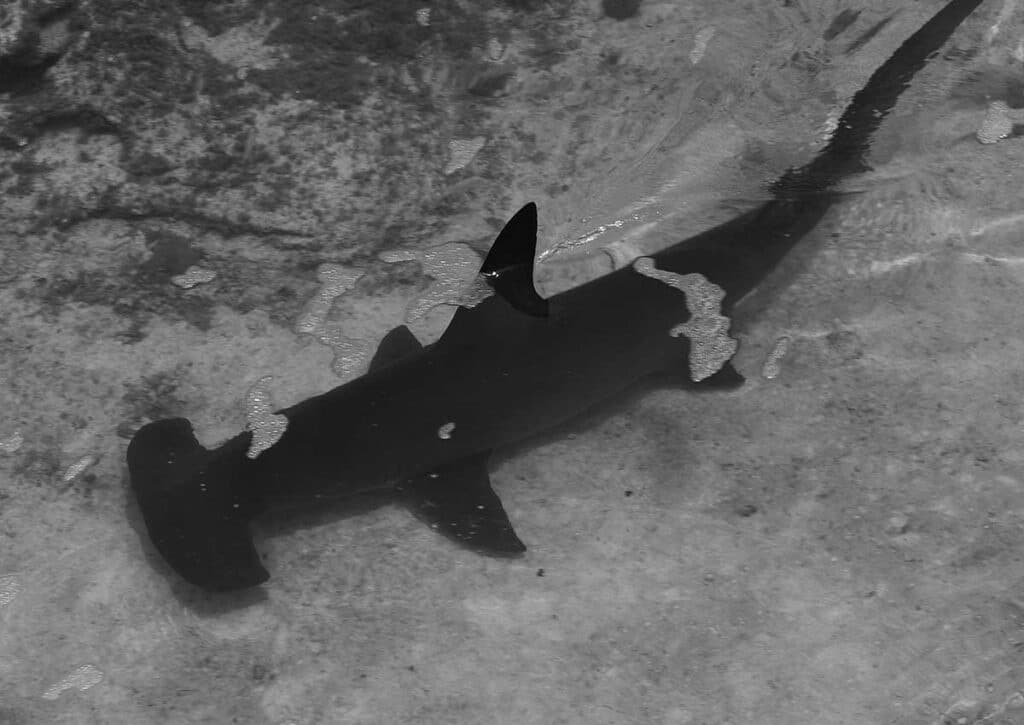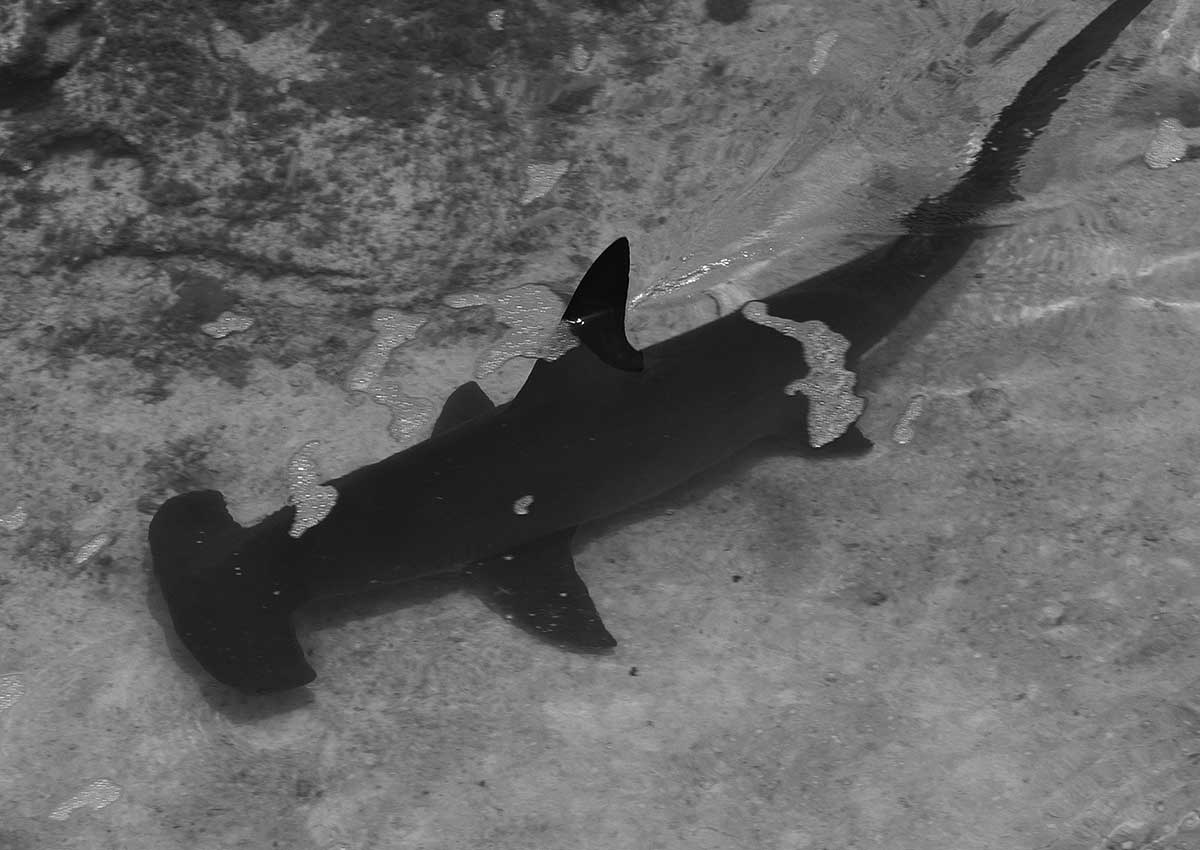by Dr. Sarah Treanor Bois
Director of Research & Education at the Linda Loring Nature Foundation
When we talk about climate change on Nantucket, the conversation often revolves around rising sea levels, erosion, increased storms, and storm surge. Lately, though, we have been seeing another effect of climate change in the form of warming ocean waters.
It may seem like a benefit to vacationers and beachgoers. Warming seas may mean more pleasant swimming temperatures earlier and later in the season. But there are some serious secondary consequences to warming waters.
In the last 100 years, average ocean surface temperatures have risen by about 1.6 degrees Fahrenheit, according to the National Oceanic and Atmospheric Administration. As greenhouse gases trap heat on the planet, oceans heat up — they absorb 93% of that excess heat.
NASA’s Earth Observatory reports that the Gulf of Maine, which stretches from Cape Cod to Canada, is warming at an average rate of 0.11 degrees Fahrenheit each year, an increase that is three times faster than the global average.
These warming waters can have ecological consequences for the creatures that live in the ocean. Just like birds migrate to seek food and warmer air temperatures, fish and other sea creatures migrate with ocean currents to look for food and habitable water temperatures.
Last year was the hottest on record for the oceans. According to the Gulf of Maine Research Institute, temperatures off the Northeast coast are now 5.4 to 7.2 degrees above normal.
Not surprisingly, ocean animal and plant species do best within a relatively narrow range of temperatures. Any changes to those temperatures can result in catastrophic shifts within any one of a number of delicately balanced ecosystems.
Although you may not have noticed the warmer water, especially when you jump in to take a cook dip on a hot day, you may have noticed the increase in jelly fish this year. This is just one example of shifting species. The last two weeks of August, beaches all across the island posted warnings for increased sighting of stinging jellyfish. Lifeguards, the hospital, and others have all noted increases in jellyfish stings needing treatment.
Nantucket is no stranger to jellyfish who generally show up towards the end of summer or early September when ocean waters are at the warmest. However, increases in temperature have meant an earlier arrival of jellyfish to Nantucket. Unlike many marine species, jellies can thrive in warmer water with less oxygen and so are showing up in larger numbers as ocean temperatures rise. Arriving earlier means they are arriving at a time of summer when there are more people at the beach to notice them. Atlantic sea nettles are the species of jellyfish that more people have been seeing and which pack a stinging punch. The sea nettles and the lion’s mane jellies are responsible for the majority of stings that have been treated by Nantucket lifeguards in the last month. Moon jellies and comb jellies have also been spotted around the island, but they are harmless to humans. We are also seeing more frequent sightings of Portuguese Man o’ War, a far more potent species of jellyfish generally found in large numbers further south. We usually have reports of a few each year, but last week there were 10 in one day! Not only are their stings painful, but they can leave welt-like red marks on the skin.
And it’s not just stinging jellyfish. We are also seeing some unusual species of fish show up that have either never been seen here before or are very rare visitors.
In early July, a vacationer fishing from shore near Eel Point hooked a houndfish, a warm-water species that may never have been caught before along the Massachusetts shore and was definitely a first for Nantucket. The houndfish was a skinny, 4-foot-long fish with a needlelike mouth and menacing teeth. While this could be just an unfamiliar fish way off course, it is one of a slew of unusual fish reports from the shores of New England in recent years.
Another new visitor to our area has gotten a lot of people talking. There have been multiple hammerhead shark sightings this year, with some relatively close to shore. Eric Savetsky, of the Nantucket Land Bank, photographed a scalloped hammerhead about 80 miles south of the island in July. In late August, a fisherman saw a hammerhead in shallow waters of the Monomoy tip on the Cape. Hammerheads, of which there are many species, are more typically found in warmer, tropical-like waters. With the gulf stream extending further north, hammerheads are being seen more frequently along the coast where, previously, it would have been too cold.

These additional wildlife sightings may be exciting for islanders and visitors. It’s always interesting to see something new and to add to the Nantucket biodiversity. But there is another consequence to warming waters. Some species that are typically found around Nantucket may be moving further north to escape higher than normal ocean temperatures. We’ve seen this as lobster populations move further north, for example.
Anglers have been noticing changes to ocean life for some time. It might not just be new species, but also changes to the timing of arrivals such as bonito and false albacore, striped bass, and bluefish—their activity is primarily temperature dependent. As the waters warm earlier, the fishing changes as well.
These warm ocean temperatures are not only drawing in unusual sea creatures and changing fishing seasons, but also helping to fuel a busy hurricane season. Tropical storms and hurricanes derive their energy from warm ocean waters. An ocean with warm water extending through the water column can increase the odds for storms to rapidly intensify.
So, what are we to do? Changes to the ocean seem beyond our control, but as most of the changes we are seeing are a direct result of human activity, and are often made worse by human activity, we do have the power to limit the effects of climate change. September is Climate Change Awareness Month and there are many chances to learn about what we, as a community, can do. For more resources, visit acklimate.org.
Rather than becoming complacent, these changes to our environment should instead bring us to action. We should be moved from discussion to action at the local, state, national, and international levels. The ramifications of climate change are real and they are here on Nantucket. Learn more about what your community is doing to address climate change and be part of the resilient solutions.



